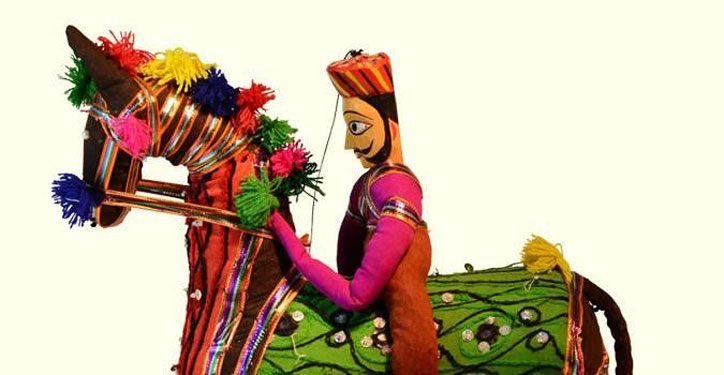 Street
Street performances as an art form have existed since time immemorial, with musicians, dancers, magicians and a plethora of artistes exhibiting their craft in public. In India too, street art has pervaded in the ethos and cultural stream through a variety of styles. One such artiste is "folk balladeer" Pratyul Joshi, a multifaceted singer and street performer who has charmed audiences with his blend of folk and contemporary rock.
Chasing his dreams to become a musician, Joshi came to Mumbai in 2012 after completing a Masters degree in sound engineering at the Film and Television Institute of India (FTII), Pune, and had no finances or contacts.
A common friend, who had seen him performing at FTII annual functions and gatherings had suggested his name to project head Anushka Mathew and founder Ajit Dayal of Natural Street for Performing Arts (NSPA) -- an NGO that was toying with the idea of pushing the street performance culture in India.
"Street performances were like a school in performance for me. The money that I made was hardly enough to buy food for a month at a place like Mumbai, but I still continued as it made me happy. It gave a sense of purpose in life, a strong belief that people may like music which had not been heard before," Joshi told IANS.
"Today when I retrospect, street performances made me deeply connect with the part of India which most artists might not know about," he added.
In the west, street musicians -- who are called buskers -- are a common sight, but India is yet to catch up with the concept. However, Joshi feels that the country has a "huge potential for street music, dances and nukkad natak (street plays)".
In today's world, where people's attention span has considerably decreased, it is hard for street performers like Joshi to arouse interest among people in crowded streets or markets. Joshi tackled this issue by singing "as loud as I can in a crowded street", and it worked.
With his vision and perseverance, Joshi went to perform at prominent Indian festivals such as Kalaghoda Arts Festival and Chembur Festival 2014, and went on to win both The Big Mic (held at Blue Frog, Mumbai) and Bandstand Revival/NH7 in People's choice concert (singer-songwriter). He was also nominated among 100 best songwriters worldwide in the "Songs for Peace 2013" contest at Florida for "Ik banjara".
He has sung songs in different dialects -- Haryanvi, Punjabi, Marwari, Malwi (Madhya Pradesh) and Garhwali (Uttarakhand).
Joshi's tryst with languages began when he was very young, as he lived in different states and travelled extensively in north, west and southern India.
"I prefer travelling in a manner where I get to see smallest villages of states and preferably interact or stay with local people... So, yes, languages came naturally to me because of these experiences and folk music is intrinsic in lives of people in towns and rural India," he said.
In 2013, Joshi toyed with the idea of coming out with a proper music video for his song "Patanga". The song is sung in Hindi and Haryanvi and the lyrics talk about how people have become like a moth ("Patanga"), getting attracted to "light" (money, greed, big city charms) and getting burnt when they reach there.
"I chose Haryanvi as it sounds phonetically a little hard hitting. I chose specifically a particular rhythm and style to sing it so that though it is a thought provoking song, on the other hand It doesn't get preachy and can be enjoyable. I have always loved a certain kind of poetry which deals with metaphors. Metaphorical grammar always enhances the meaning to greater level. Giving it layers that each person may discover according to his understanding and situation," he said about the song.
According to Joshi, awareness about folk music can be improved by spreading it through mainstream TV and cinema.
"I would also recommend having more venues and spreading culture of live performances in Tier II towns and villages too," he said, while adding that music festivals should also be taken to smaller cities and villages where artistes can "discover a whole new audience, which is sometimes more responsive and less judgmental than us".
 Street performances as an art form have existed since time immemorial, with musicians, dancers, magicians and a plethora of artistes exhibiting their craft in public. In India too, street art has pervaded in the ethos and cultural stream through a variety of styles. One such artiste is "folk balladeer" Pratyul Joshi, a multifaceted singer and street performer who has charmed audiences with his blend of folk and contemporary rock.
Street performances as an art form have existed since time immemorial, with musicians, dancers, magicians and a plethora of artistes exhibiting their craft in public. In India too, street art has pervaded in the ethos and cultural stream through a variety of styles. One such artiste is "folk balladeer" Pratyul Joshi, a multifaceted singer and street performer who has charmed audiences with his blend of folk and contemporary rock.